MEDJUGORJE
Medjugorje (in Croatian Medujorje) is located in the southern part of Bosnia-Hercegovina, one of the states of the former Yugoslavia. The main cultural and administration centre is Mostar, which lies 25 kilometers to the north-east. Access can be from Dubrovnik (130km) or Split (150km), both on the Adriatic (Dalmation) Coast of Croatia, also from Sarajevo, the capital of Bosnia (150 km) or Zagreb, the capital of Croatia. These cities have international air connections generally via Frankfurt, Munich or Vienna. Split and Dubrovnik also have ferry access to Italy across the Adriatic Sea.
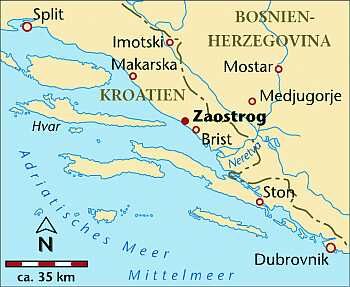
The name Medjugorje, of Slavic origin, means an area between two hills, namely Crnica (also known as Apparition Hill above the hamlet of Podbrdo) and Krizevac (also known as Cross Hill). The people lived mainly off agriculture (particularly wine and tobacco) and cattle-breeding. Difficult times led to migration over much of the twentieth century. The population of Medjugorje is made up almost entirely of Croatian Catholics. Since the appearance of Our Lady in 1981, Medjugorje has changed to a place of prayer, peace and conversion attracting over one million pilgrims per year. The population currently numbers around 5000 people.
DISTRICT IMPRESSIONS
The Parish Church of St James dominates the valley. The Medjugorje Parish incorporates four other villages of this district in Western-Hercegovina, all close to Medjugorje; Bijakovici, Vionica, Miletina and Surmanci.
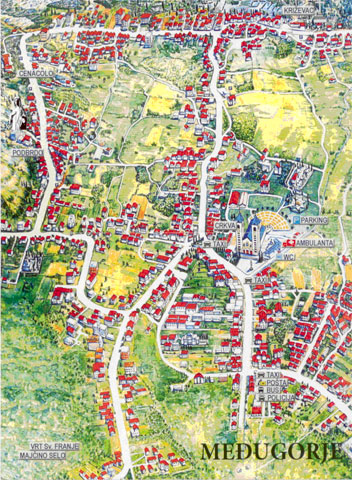
IMPORTANT SITES
ST JAMES CHURCH � THE CENTRAL PLACE OF PRAYER
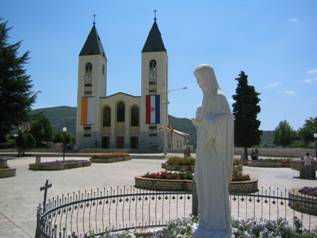
This St James�s Church was finished in 1969. It is dedicated to St James the Apostle, protector of pilgrims. An earlier Church had sunk into poor foundations. It is the central place of prayer for Medjugorje, celebrating many Masses in different languages every day as well as a variety of other celebrations. The main International Mass (primarily in Croatian), occurs each night at 7pm (summer) and 6pm (winter), with the rosary one hour prior to Mass. The statue of the Gospa (Our Lady in Croatian) is situated to the right of the main street entrance. Contact details for the Parish Centre, the Information Centre and the different spiritual services are contained in the �additional information� section.
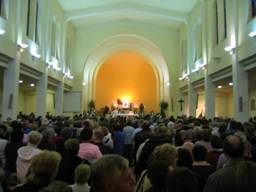
EXTERIOR ALTAR
This open air altar was built in 1989 at the back of St James� Church to seat up to 5000 pilgrims for Mass with many times that figure standing for other celebrations such as concerts and Youth Festivals. It is also used for the anniversary celebration on June 25 where it is not unusual to have over 200 priests concelebrating Holy Mass.
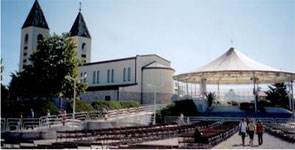
STATUE OF OUR LADY OF MEDJUGORJE
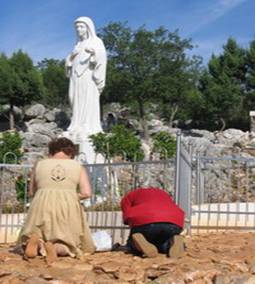
This beautiful statue of Our Lady was placed in 1987. It was crafted in marble by Italian artist Dino Felici. It is based on a picture painted by the artist Mainardi in 1981. It is a gift of a Swiss family. It is a focus for the prayers of pilgrims as they approach St James� Church.
STATUE OF THE RESURRECTION (RISEN CHRIST)
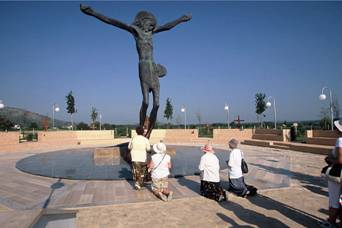

Located to the right of a path leading from the external (rear) altar towards Cross Hill is a large bronze statue by Slovenian artist Andrej Ajdic. It was donated to Medjugorje by the Slovenian (another state in the old Yugoslavia) people. It was blessed by Pope John Paul II during a visit to Slovenia. The statue symbolizes the Resurrection. Around the statue there are fourteen Stations of the Way of the Cross. From the outer side of the right knee is water dripping in the shape of �tears�.
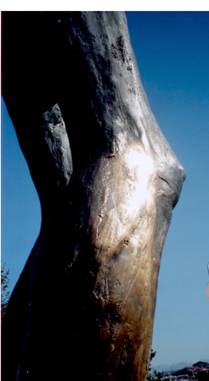
APPARITION HILL (CRNICA ABOVE PODBRDO)
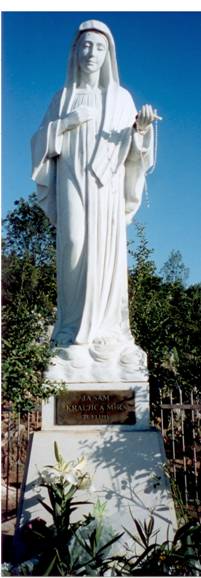
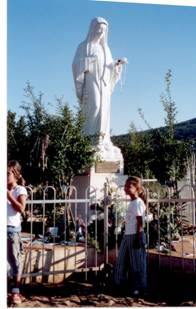
This is the site of the original appearance of Our Lady on Wednesday June 24, 1981. The Apparitions continued at the site through to Sunday June 28 , 1981. Subsequent to this, the interference of local Communist authorities forced alternate sites for the Apparitions. As with Krizevac, the ways to the Statue of Our Lady are rocky and moderately steep. Artistic works depicting the mysteries of the Rosary are stationed right around the hill. According to the visionaries, at the conclusion of Apparitions, Our Lady is going to leave a visible and indestructible sign at this place for all to see including non-believers. Until then it remains a place of prayer and peace.
KRIZEVAC (CROSS HILL) AND THE STATIONS OF THE CROSS
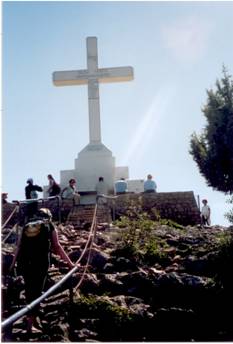
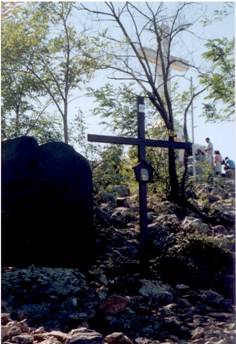
Krizevac, which means �Mount of the Cross�, dominates one end of Medjugorje. The base is around 1 kilometer from St James Church. There starts a quite steep, at times, rocky passage to the Cross, originally completed on March 15, 1934, to commemorate the 1900th anniversary of the passion and death of Jesus. The Cross is 12m tall and made of cement. The climb is about 300 metres to the peak at 540 metres above sea level. Krizevac is the Calvary of Medjugorje. Situated at uneven intervals along the �path� are the fourteen Stations of the Cross. At each Station is a large work of art by Italian sculptor, Carmello Puzzolo. The Way of the Cross takes place at 2pm each Friday. It is amazing to see this fairly tough climb being undertaken by people of all ages, many without footware, most with their Rosaries in hand. Bottled water is a definite recommendation for the climb.
The summit of Cross Hill allows a wonderful view back to Medjugorje and out to surrounding hills and distant mountains. Apparition Hill is out to the right.